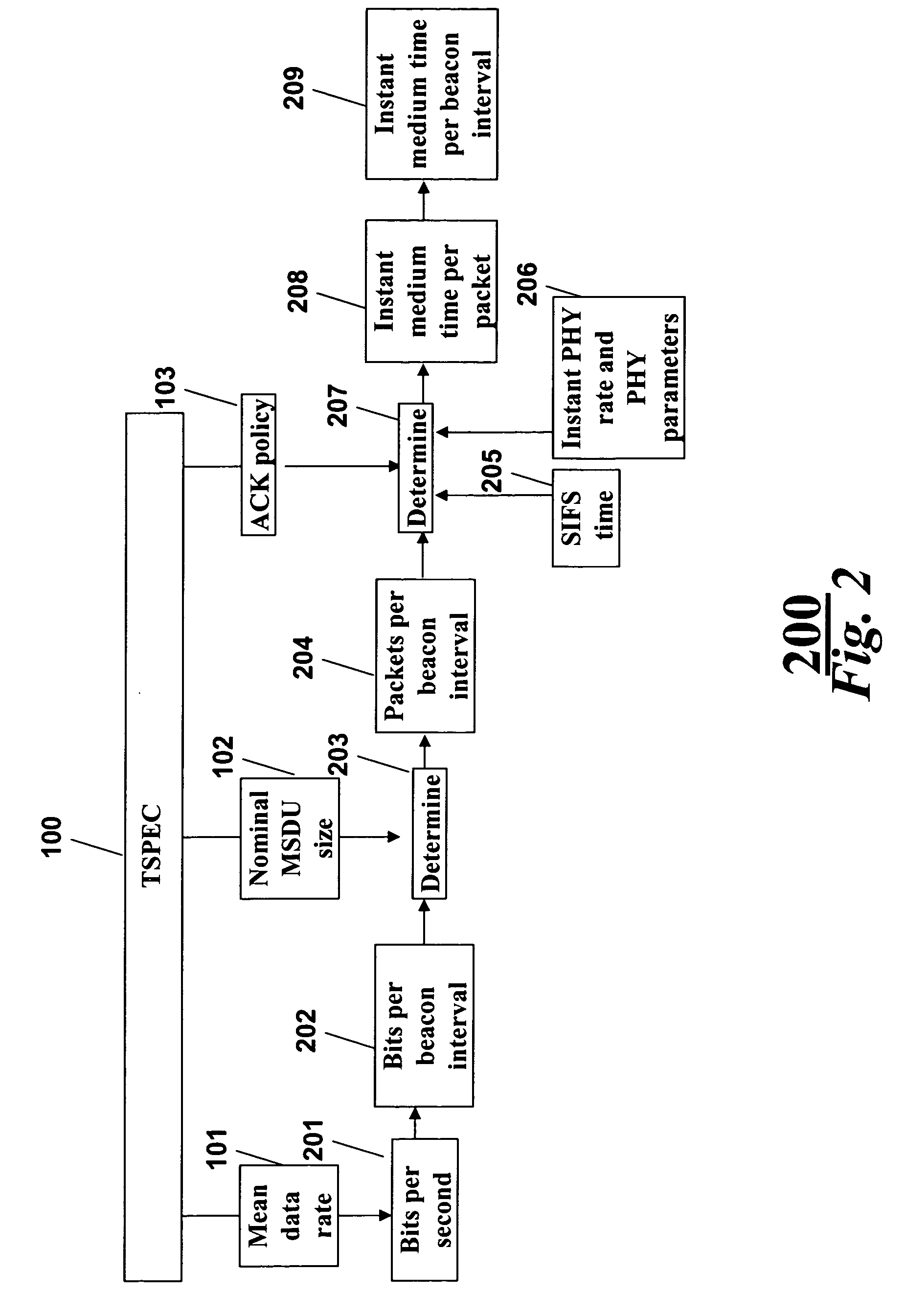QoS for AV transmission over wireless networks
a wireless network and quality service technology, applied in the field of quality of service for av transmission over wireless networks, can solve the problems of inability to deliver a quality av stream to the stations, difficulty in streaming data, and insufficient priorities in the wireless network, so as to reduce the bandwidth allocation of victim streams and reduce the effect of bandwidth allocation
- Summary
- Abstract
- Description
- Claims
- Application Information
AI Technical Summary
Benefits of technology
Problems solved by technology
Method used
Image
Examples
case 1
[0032] THMT is greater than CFPL. This means that the required bandwidth by the HCCA category is greater than the bandwidth allocated. That is, the bandwidth for the HCCA category is insufficient. Let D denote THMT minus CFPL 304. The QoS method selects 305 the lowest priority TS as a ‘victim’ which is marked as modified and inserted in a modified TS list (MTSL).
[0033] The QoS method determines 306 if the victim is in the HCCA category. If the victim is in the HCCA category and its total time allocated (TTA) is greater than D 307, the QoS method reduce its TTA by D 308. This actually solves the bandwidth shortage problem for the HCCA category. The QoS method goes to calculate the total instant medium time for all TSs in EDCA category 309, denoted by TEMT.
[0034] If the victim is in the HCCA category and its TTA is less than D, the QoS method rejects the victim for transmission 310, i.e., transmission is temporarily terminated. Because the bandwidth for the HCCA category is still in...
case 2
[0037] As shown in FIG. 3B, the THMT is less than the CFPL. This indicates that the required bandwidth by the HCCA category TS is less than the bandwidth allocated. That is, extra contention free period time is available 319. The QoS method redistributes this extra time.
[0038] Let D denote CFPL minus THMT 320. The QoS method checks if MTSL is empty 321. If yes, the QoS method calculates TEMT 322. If not, the QoS method selects the highest priority TS in MTSL 323. The QoS method determines 324 if the selected TS is in the HCCA category. If the TS is in the HCCA category and its TTA plus D is less than its IMT 325, then the QoS method increases its TTA by D 326. The TS remains in MTSL because its bandwidth requirement has not been satisfied completely. Because there is no more extra contention free period time left, the QoS method calculates TEMT 327.
[0039] If the TS is in the HCCA category and its TTA plus D is greater than its IMT, the QoS method increases 328 its TTA to IMT and r...
PUM
 Login to View More
Login to View More Abstract
Description
Claims
Application Information
 Login to View More
Login to View More - R&D
- Intellectual Property
- Life Sciences
- Materials
- Tech Scout
- Unparalleled Data Quality
- Higher Quality Content
- 60% Fewer Hallucinations
Browse by: Latest US Patents, China's latest patents, Technical Efficacy Thesaurus, Application Domain, Technology Topic, Popular Technical Reports.
© 2025 PatSnap. All rights reserved.Legal|Privacy policy|Modern Slavery Act Transparency Statement|Sitemap|About US| Contact US: help@patsnap.com



